
Have Has Grammar Have Has Grammar have has grammar have has grammar have has grammar workshee in
Употребление глагола to have в английском: правила спряжения, функции, конструкция с got. Глагол have в английском языке имеет довольно много разных функций. Он является той структурной единицей.
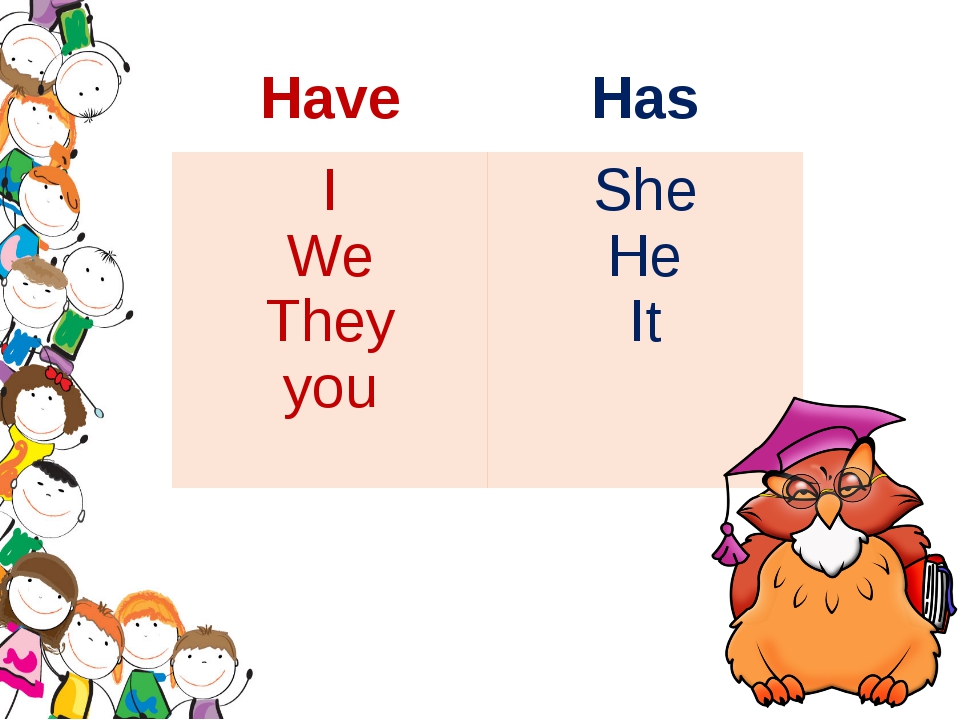
Simple Present verb have/has questions & answers for quizzes and worksheets Quizizz
Давайте выберем глаголы have/has правильно: "People HAVE abilities" (у людей есть способности) - мы имеем в виду много людей и можем заменить их на "They" поэтому используем глагол Have; "The people HAS their history.

В чем разница между have/has/had и have got когда употребляется have, а когда has и had SPEAK
Висновок. Тепер ви знаєте всі have has правила: коли ставиться "have", а коли "has" і володієте всіма необхідними знаннями для того, щоб ваше мовлення було не тільки граматично правильним, а й.

HAS vs HAVE How to Use Have vs Has with Useful Examples • 7ESL English grammar rules, English
Правило употребления has / have следующее: Has употребляется с местоимениями в единственном числе третьего лица he, she, it, например: He has a bike. — У него есть велосипед. She has a sister. — У нее есть сестра. This is a tree. It has many branches. — Это дерево. У него есть много веток.

Have got / Has got Английский и немецкий для детей и взрослых
modal verbs: 'have to'. 'have to' is used to mean that something is necessary. It is used in the following way in affirmative sentences: subject + modal (have to / has to) + verb. 'I have to wash my car today.'. 'He has to write a report.'. 'I had to go to the bank yesterday.'.

English lessons SJ3 Smart (1)
you (all) have. 3rd person: he, she, it, they. he/she/it has. they have. You'll notice that the only subject you should use "has" with is third person singular (he has, she has, it has). You should use "have" everywhere else. The subject "Al and Sue" is third person plural (the same as "they"), so use "have." Al and Sue have purchased a new home.

Різниця між have, has, had та особливості використання цих дієслів
Как уже отмечалось, употребление have и has зависит от глагольного времени и подлежащего, чаще всего выраженного местоимением. Поэтому правило, когда употребляется have, а когда has, обычно звучит.

Has Have Had Grammar Rules MoseswellLogan
Imperativ of the irregular verb [have / has] The imperative mood is a grammatical mood that forms a command or request. An example of a verb used in the imperative mood is the English phrase "Go." Such imperatives imply a second-person subject (you), but some other languages also have first- and third-person imperatives, with the meaning of.

Have vs. Has English grammar fill in the blanks exercises with answers in PDF
The verb have has the forms: have, has, having, had. The base form of the verb is have. The present participle is having. The past tense and past participle form is had. The present and past forms are often contracted in everyday speech, especially when have is being used as an auxiliary verb. The contracted forms are: have = 've.
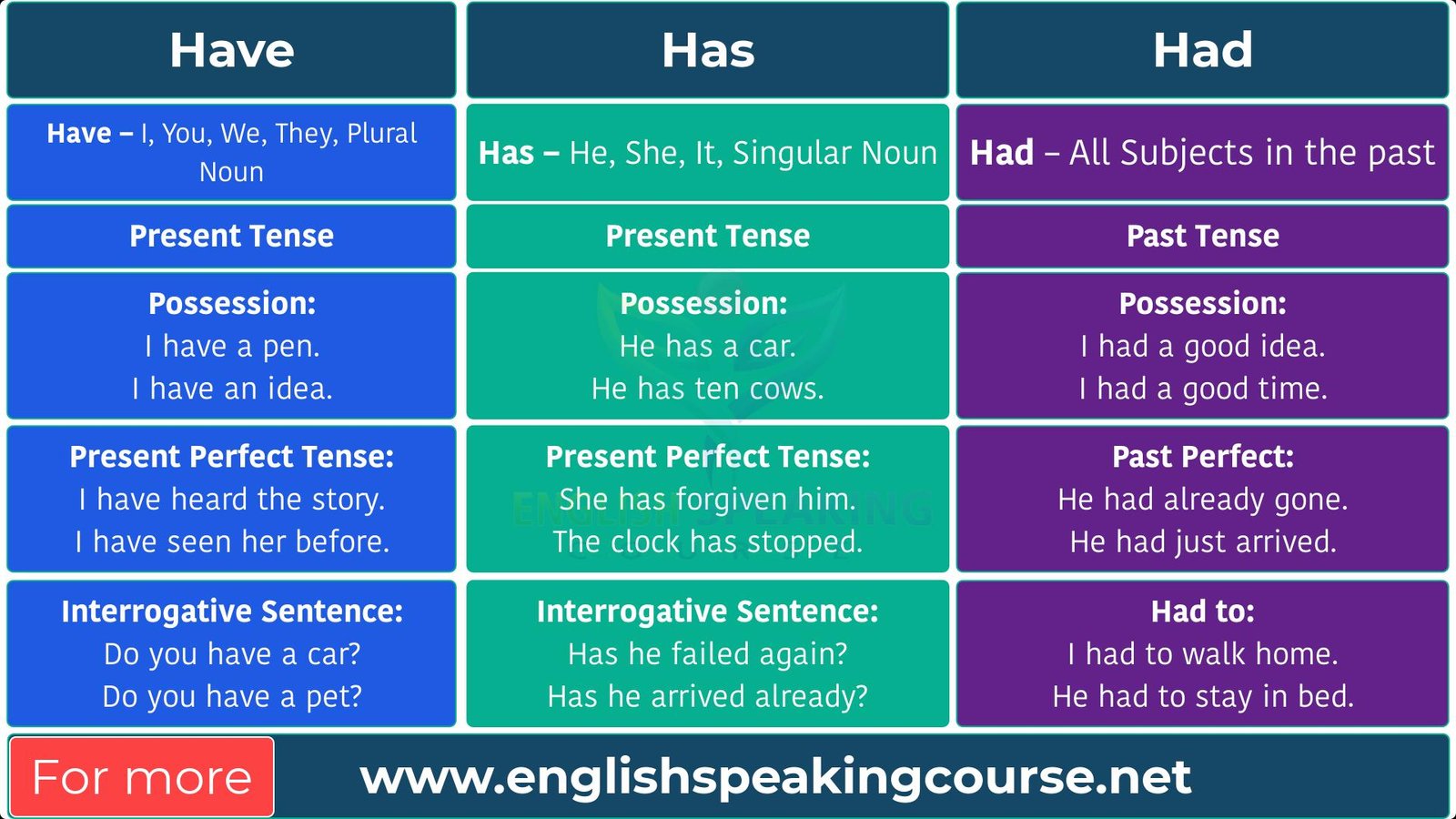
Have Has Had Basic English Grammar Grammar
Using "Has" or "Have" To Indicate Possibility. Have and has can be used with other verbs to indicate something that hasn't happened yet. The formula for this type of sentence is: [subject] + [have/has] + ["to" infinitive form of the verb] + [complement] For example: I have to study if I want to pass the exam.
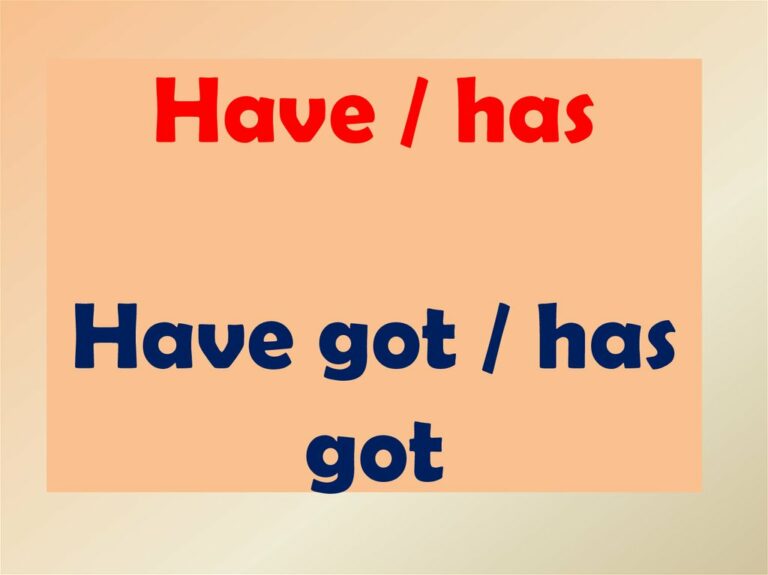
Has have правило употребления глагола
Has is a conjugation of the verb to have that is used when referring to someone or something in the third person singular. Has is commonly used with the pronouns he, she, and it, which are all singular. If you are referring to one person or thing, and you aren't using I or you to refer to them, then use has. Has in a sentence
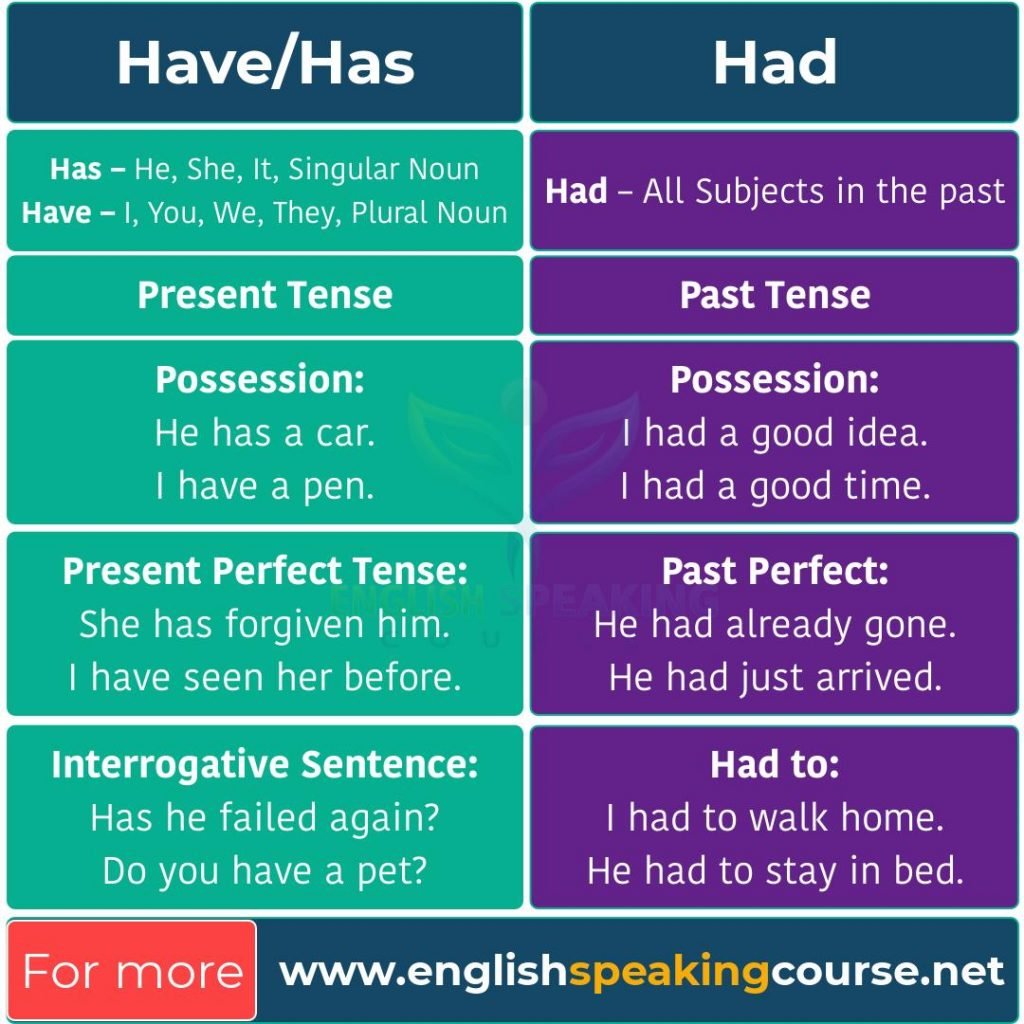
Have Has Had Basic English Grammar Grammar
Note: You can check out this article on plural rules to better understand singular and plural subjects. Usage of has. Let's look at the usage of "has" in different verb forms, contexts, and sentence structures. Simple present tense. In the simple present tense, "has" is used to describe actions happening right now or habitual actions for third-person singular subjects.

Have和Have Got Have和Have Got的区别
(Download) "Has" vs. "Have": What's the Difference? "Has" and "have" are both conjugations of the verb "to have." The main difference between them is that "has" is used with the third person singular (he, she, it), while "have" is used for all other subjects.

вживання have/has got
Have или has правило В настоящем времени этот глагол может применяться в двух формах have и has — это зависит от лица подлежащего. Для третьего лица (местоимения he, she, it, а также имена собственные, которые можно на них заменить) используется has. Например: Susie has a beautiful dress — У Сьюзи красивое платье;

Use of Has and Have Has and Have in English Grammar Has and Have อัปเดตใหม่it have or has
Present Tense Uses of Have and Has Both words are present tense forms of the verb to have. The past-tense form is had, and the present progressive tense (or continuous tense) is having. The correct verb conjugation depends on the sentence's point of view.
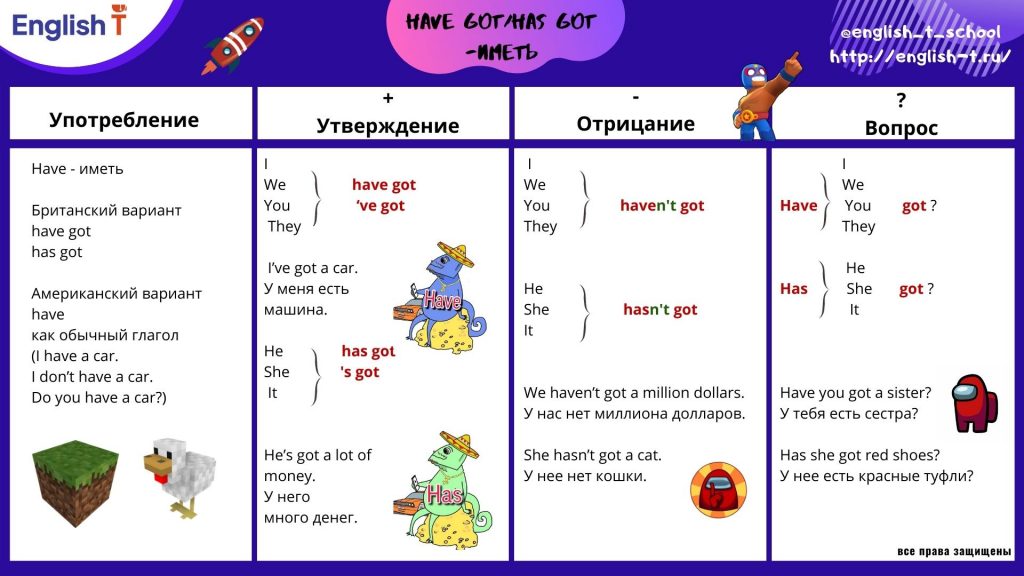
have has правило таблица для детей
We use a modal verb with have: to refer back from the present: It's nearly eight o'clock. They will have arrived by now. to refer back from a point of time in the past: We were very worried. We thought someone might have taken the car. to refer back from a point of time in the future: We won't eat until they arrive.